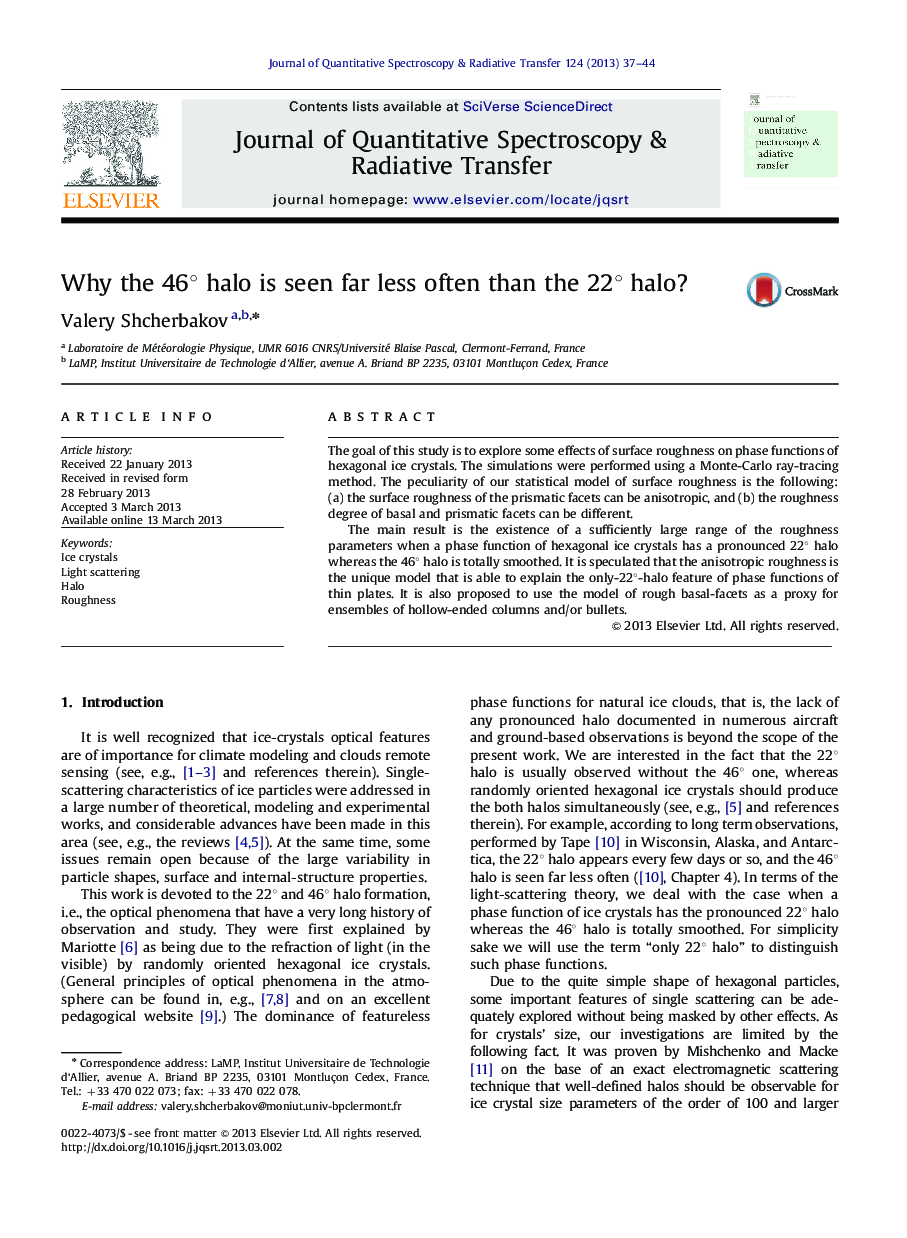| Article ID | Journal | Published Year | Pages | File Type |
|---|---|---|---|---|
| 5428846 | Journal of Quantitative Spectroscopy and Radiative Transfer | 2013 | 8 Pages |
â¢We modeled phase functions of hexagonal ice crystals.â¢We used a new statistical model of surface roughness.â¢The surface roughness can be anisotropic.â¢The model is able to explain the only-22°-halo feature of thin plates.
The goal of this study is to explore some effects of surface roughness on phase functions of hexagonal ice crystals. The simulations were performed using a Monte-Carlo ray-tracing method. The peculiarity of our statistical model of surface roughness is the following: (a) the surface roughness of the prismatic facets can be anisotropic, and (b) the roughness degree of basal and prismatic facets can be different.The main result is the existence of a sufficiently large range of the roughness parameters when a phase function of hexagonal ice crystals has a pronounced 22° halo whereas the 46° halo is totally smoothed. It is speculated that the anisotropic roughness is the unique model that is able to explain the only-22°-halo feature of phase functions of thin plates. It is also proposed to use the model of rough basal-facets as a proxy for ensembles of hollow-ended columns and/or bullets.
